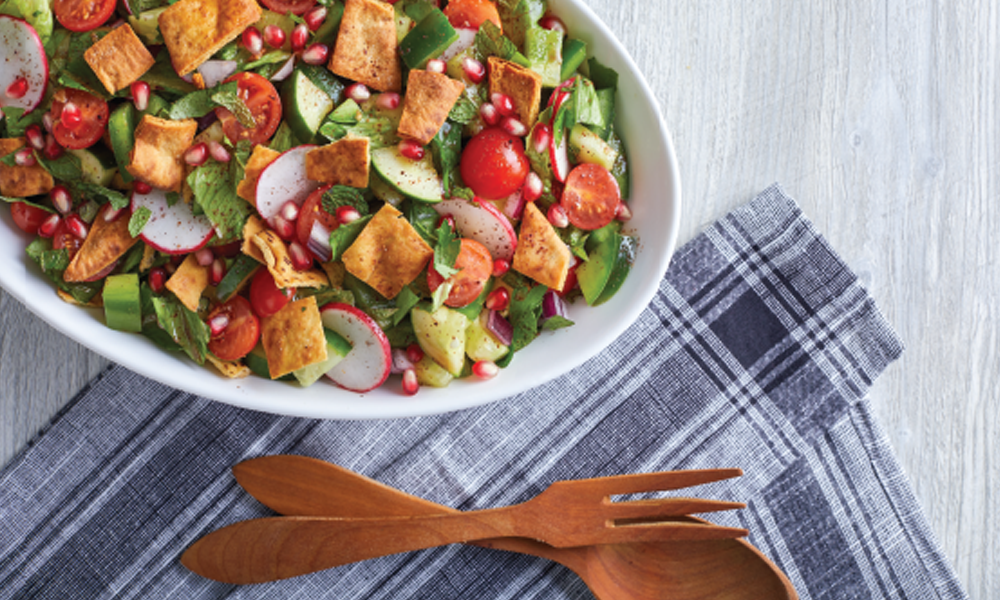
St. Paul’s Conversion Transformed the Early Church
Honor this great apostle with a Mediterranean salad.
Honor this great apostle with a Mediterranean salad.
The feast of the Conversion of St. Paul is Jan. 25,
In the middle of winter, sometimes it's hard to imagine spring ever coming again! It is fitting that in the midst of this time when it can feel so cold, we celebrate the heartwarming conversion of St. Paul the Apostle on Jan. 25. As we know, before his conversion, St. Paul, or Saul, was persecuting Christians, and he himself tells the story of his conversion in the Acts of the Apostles.
The feast of the Conversion of St. Paul is Jan. 25,
In the middle of winter, sometimes it's hard to imagine spring ever coming again! It is fitting that in the midst of this time when it can feel so cold, we celebrate the heartwarming conversion of St. Paul the Apostle on Jan. 25. As we know, before his conversion, St. Paul, or Saul, was persecuting Christians, and he himself tells the story of his conversion in the Acts of the Apostles.
On his way to Damascus Paul was struck down, blinded, and heard the voice of God saying, “Saul, Saul, why are you persecuting me?” Paul replied: “Who are you, sir?” The voice said in reply: “Jesus the Nazorean, why are you persecuting me?” When Paul said, “What shall I do sir?” God told him to go to Damascus and that he would be told what to do upon his arrival. So Paul went and he had his eyes opened and was able to see the truth.
St. Paul was on the wrong path when God intervened in his life and changed his heart and mind to see the truth. The events that occurred after that extraordinary event dramatically changed the course of Paul’s life, and Paul went on to be one of the most influential leaders in the early Church, playing a crucial role in spreading the Gospel to the Gentiles.
A hearty salad called Fattoush originated from this area of the world, and is now a staple on Mediterranean-cuisine menus. Many years ago in rural areas throughout the Mediterranean region, farmers would mix together leftover flatbread, with a little olive oil, and combine that with the fruits of their harvest for an easy, healthy meal.
Fattoush is quite the forgiving recipe for any beginner chef. All of the ingredients are chopped up and folded together to make this one cohesive meal, not unlike the time when Paul was broken and tearing his people apart, and God stepped in and made Paul whole again. Give this colorful and flavor-packed salad a try on a drab winter night!
Isabella Pardino is a graduate of The Catholic University of America’s School of Theology and Religious Studies and is currently a graduate student at Columbia University’s School of Nursing.
¡Lee este artículo en español! (Spanish Language Version)
Fattoush salad
Salad
- 1 large head romaine lettuce
- 1 package cherry tomatoes
- 2 small cucumbers
- 3-5 radishes
- 1 green pepper
- 1 small red onion
- 2 T. fresh mint
- ¼ c. fresh parsley
- Pita chips (homemade or store bought)
- 1 pomegranate, seeded (optional)
Chop/slice vegetables in fairly similar sizes so that every bite of the salad is complete with each texture and flavor. Finely chop the herbs and toss everything together in a large bowl except for pita chips and pomegranate.
Dressing
- ¼ c. freshly squeezed lemon juice
- 1 garlic clove, minced extremely finely
- 1 t. ground sumac
- ½ t. salt
- ¼ t. freshly ground black pepper
- 3 T. extra-virgin olive oil, cold pressed
Combine the lemon juice, garlic, sumac, salt, and pepper in a mini food processor (or jar with tight lid). Process/shake until smooth. Add olive oil and mix until emulsified. Dressing can be made in advance and will hold well in the fridge for several days. Give it a good shake before adding to the salad.
Pita chips
- 1 package pita bread (stale or fresh)
- Extra virgin olive oil
- Salt
Heat oven to 325°F. Roughly chop 2-4 pita breads into similar size pieces, about 1-2”. Toss in a large bowl with a generous drizzle of olive oil and a dash of salt. Spread a single layer on a large baking sheet or two, and bake for up to 20 minutes, turning once. Store in an airtight container at room temp.
Just before serving, dress the salad and toss lightly with half of the pita chips to coat evenly. Finish with more crushed pita chips on top (or a dish on the side) and a dusting of sumac, fresh mint, and pomegranate seeds.



